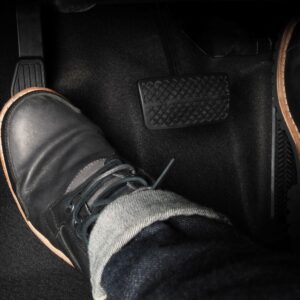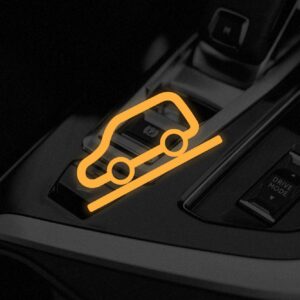Every driver is bound to develop a couple of bad driving habits here and there. Riding the clutch is one common example, and anybody guilty of this bad habit ought to nip it in the bud as soon as possible.
What Is Riding the Clutch?
Riding the clutch means putting unnecessary pressure on the clutch pedal without pressing it down all the way. In other words, your clutch is stuck somewhere between fully pressed and fully released. This typically happens when you rest your foot on the clutch pedal while driving.
A certain amount of clutch riding is normal and unavoidable, like when you’re backing out of a parking spot. However, too much of it can lead to some costly damage to your clutch.
What Are the Negative Effects of Riding the Clutch?
Occasionally riding the clutch isn’t likely to cause significant damage. However, like all bad habits, doing it too often isn’t good for you or your vehicle. Frequently riding the clutch can cause excessive wear on your clutch disc, pressure plate, and release bearing.
You may have to replace these components sooner than expected. Unfortunately, these parts are considered wear-and-tear items, so repairs probably won’t be covered by your car’s warranty. You’ll have to pay out of your own pocket for these.

How To Avoid Riding the Clutch
Old habits die hard, but that doesn’t mean they’re impossible to unlearn. Here are some tips on how to break the habit of riding the clutch:
Take Your Foot off the Pedal
Taking your foot off the clutch pedal is easier said than done. Plenty of drivers don’t even realize they keep their foot on the pedal, which makes it harder to stop.
Make use of your vehicle’s footrest to avoid riding the clutch. If your car doesn’t come with a footrest, then place your foot on the floor instead.
Adjust Your Driving Position
Sitting too close to the clutch pedal is one of the most common causes of riding the clutch. It makes it hard for you to move your foot, causing you to leave it resting on the pedal.
Try moving your seat back to give yourself enough legroom. This should help improve your posture and make your drive much more comfortable.
Use Neutral More
As much as possible, try to use neutral while you’re waiting for the green light. A lot of drivers tend to leave their car in first gear with their foot on the brake and the clutch pressed down. It might be easier to continue driving once the light turns green, but you’ll also end up riding the clutch.
Instead, consider shifting into neutral and taking your foot off the clutch until it’s time to move again.
Change Gears Quickly
Here’s a useful tip when changing gears: don’t dawdle. Thinking before you switch gears is fine, but hesitating for too long is bad. It causes you to keep your foot on the clutch pedal unnecessarily, which puts additional strain on your clutch.
Use the Handbrake When Parking
Many drivers, especially old ones, leave their car in gear when parked. However, even with the engine turned off, leaving your vehicle in gear causes the clutch to wear faster.
Use the handbrake when parking to secure your car so there’s less strain on the clutch.
Switch to an Automatic Vehicle
If you’re looking for the easy way out, this is it. An automatic transmission handles the gear changes itself, so it only comes with a brake and accelerator pedal. You don’t have to worry about riding the clutch because there is no clutch pedal to ride.
What Does the Clutch Do in a Car?
In a manual vehicle, the clutch disconnects the engine from the driveshaft (and thus, the wheels) when you press down on the clutch pedal. This allows you to change gears without having to switch off your engine.
Depressing the clutch engages the power again unless your vehicle is in neutral.
What Is Clutch Control?
Clutch control is all about mastering the power transfer between your engine and your wheels. It’s what enables you to change gears without stalling and drive in stop-and-go traffic. By perfecting clutch control, you can maintain better control of your car at low speeds.
Any information provided on this Website is for informational purposes only and is not intended to replace consultation with a professional mechanic. The accuracy and timeliness of the information may change from the time of publication.



















